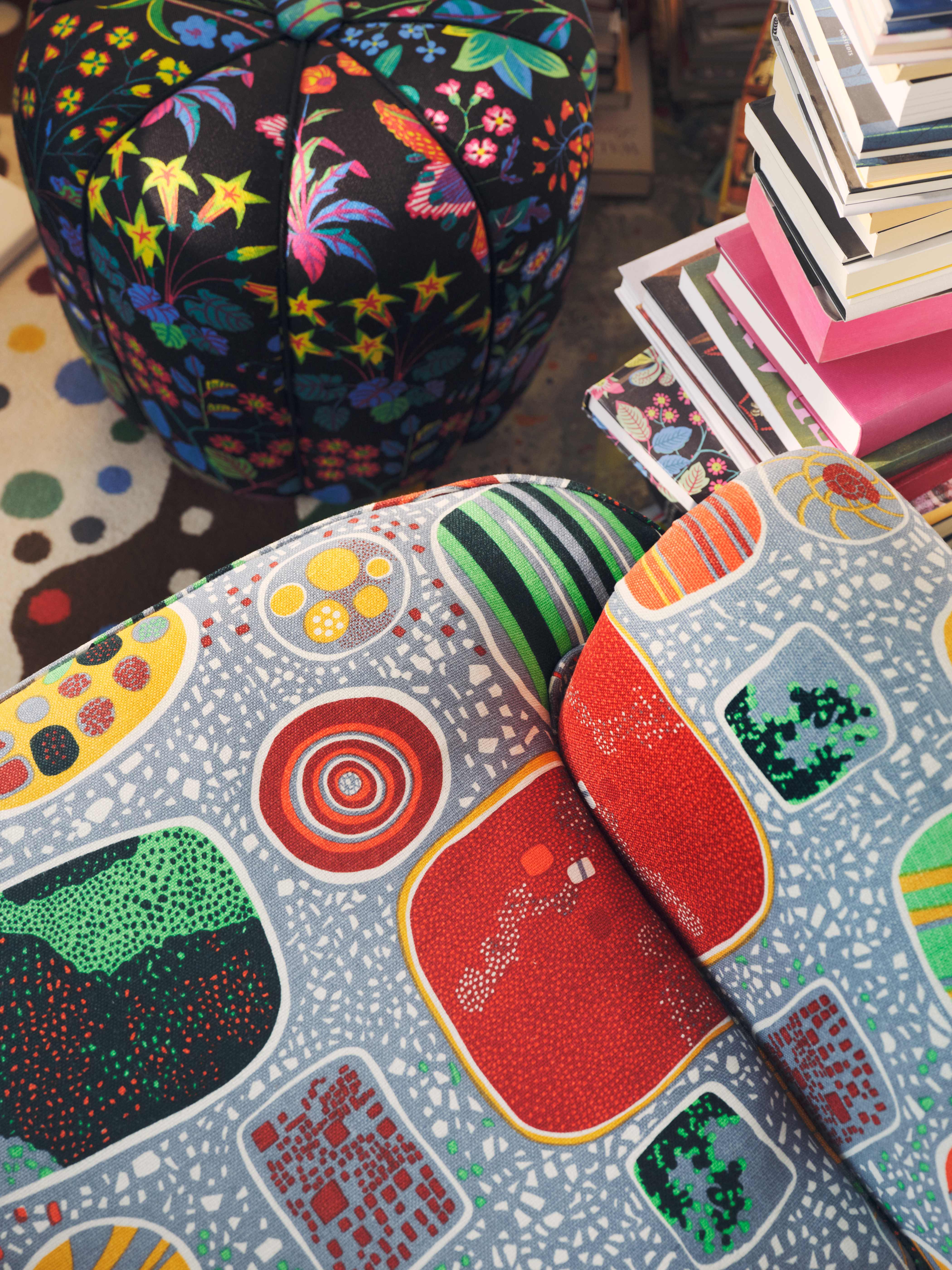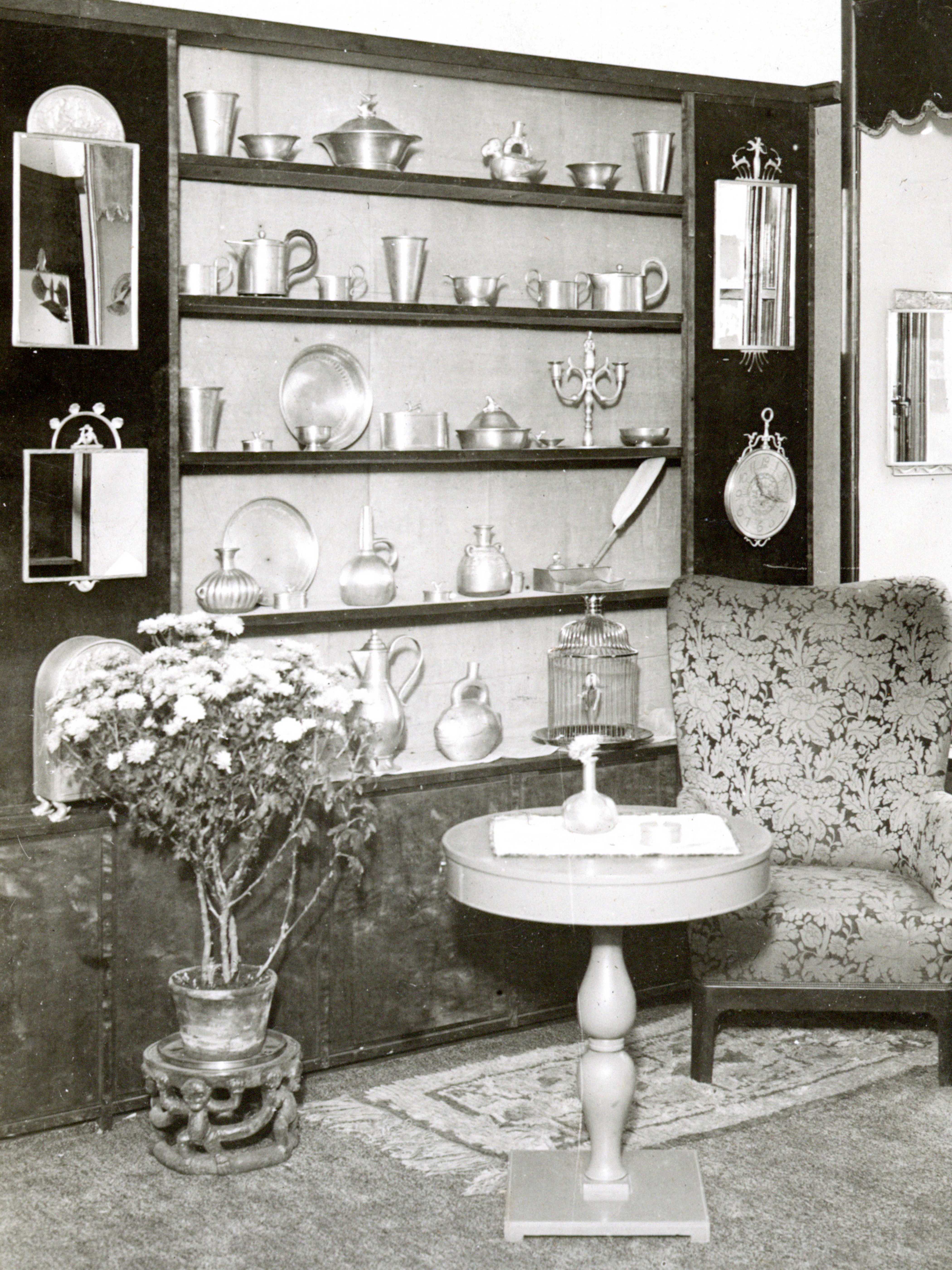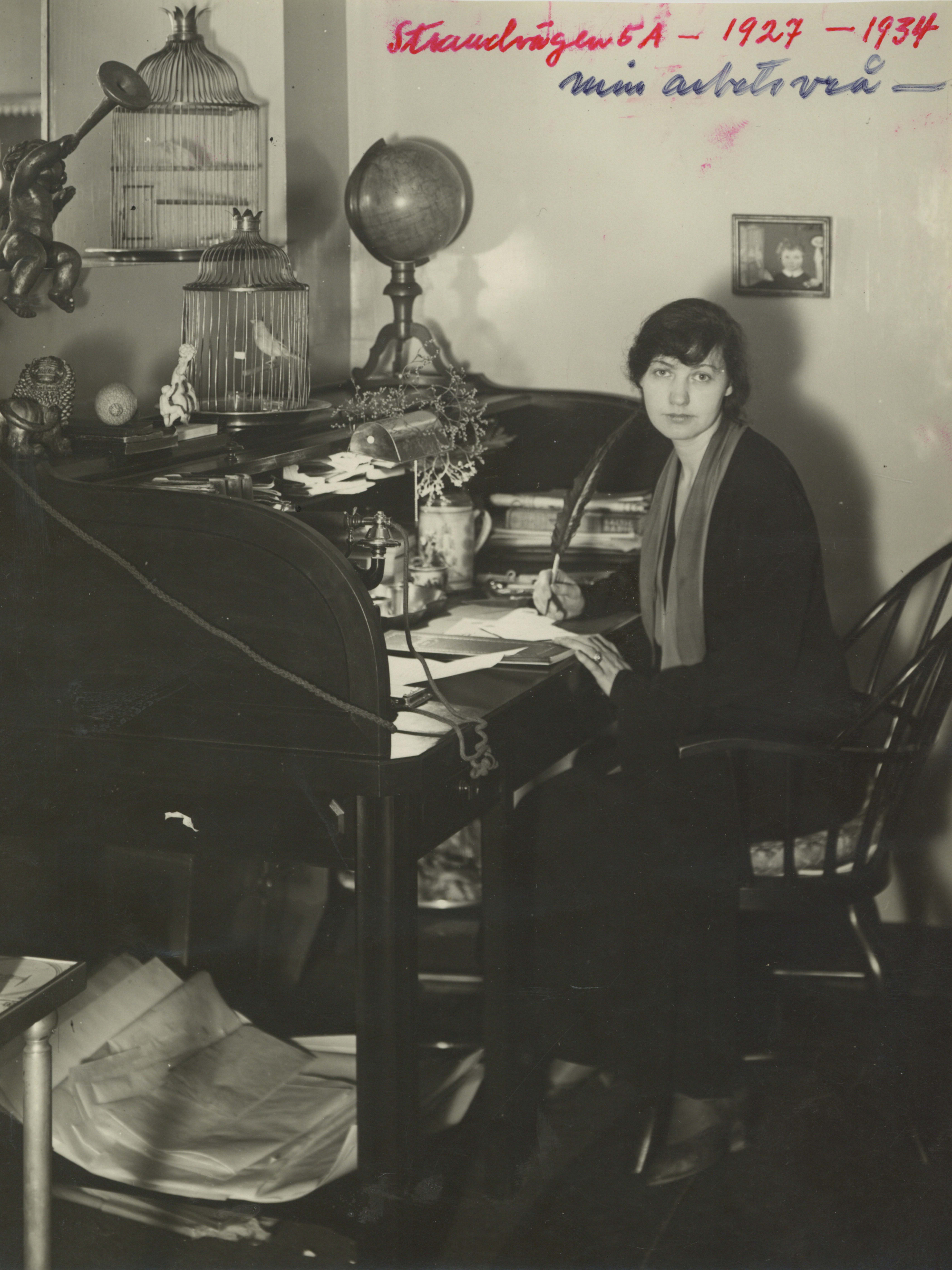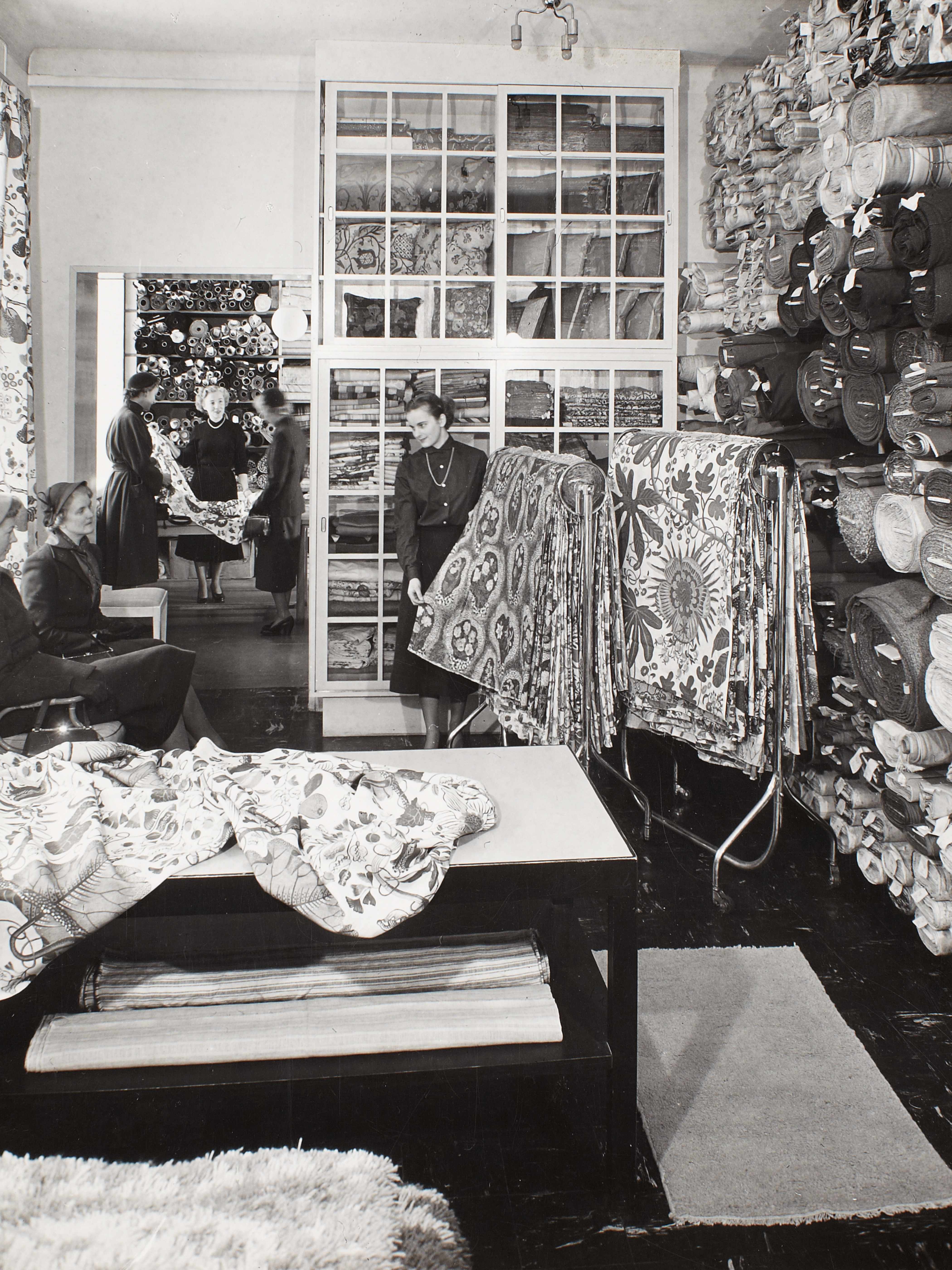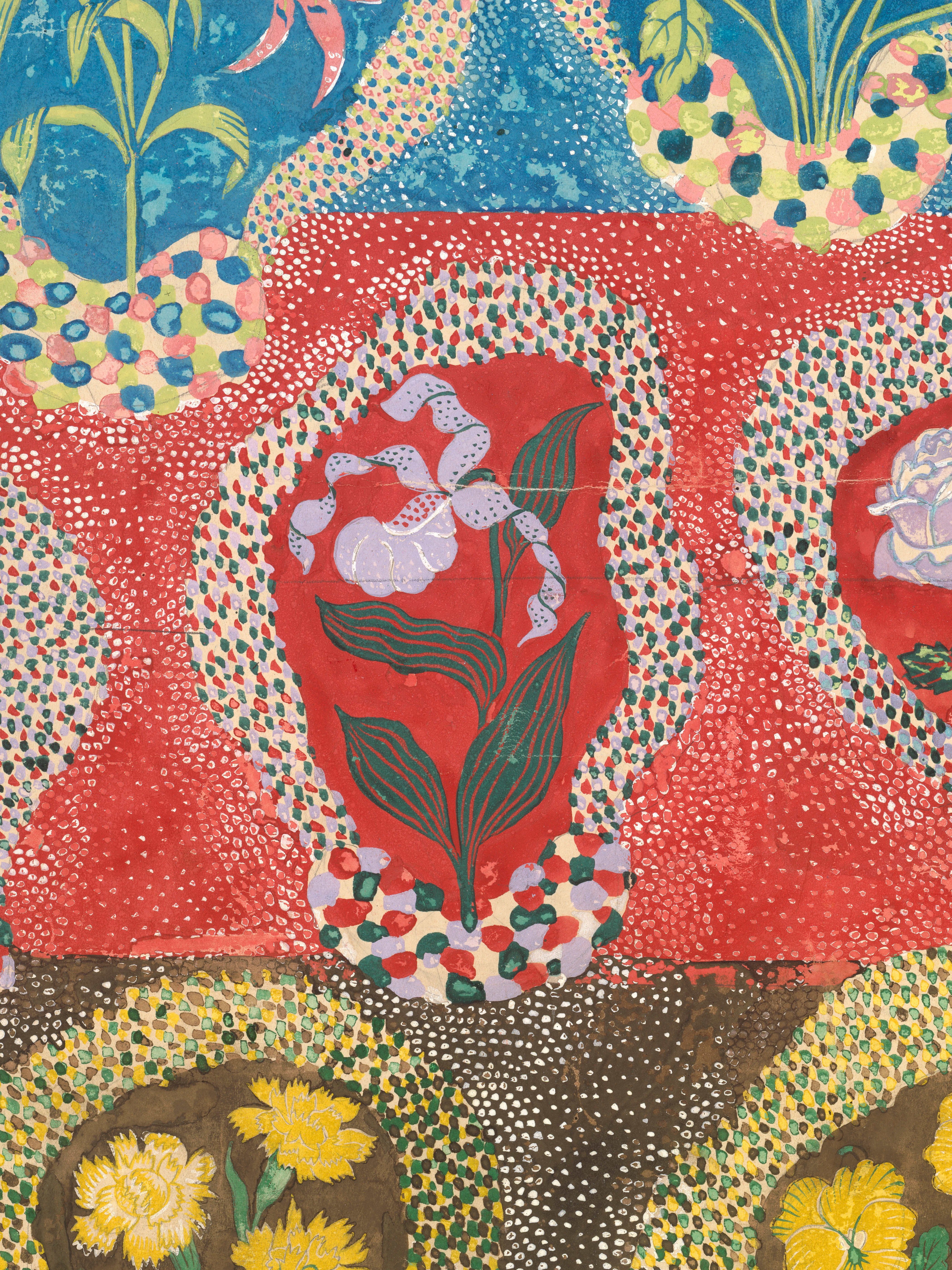Svenskt Tenn – Since 1924
Svenskt Tenn was established 1924 by Estrid Ericson. It started as a small pewter business and later transformed into one of Stockholm's most elegant interior design stores.

The history of Svenskt Tenn
The story of Svenskt Tenn begins in the summer of 1924. At the time, pewter was an exciting and highly fashionable material — an affordable yet beautiful alternative to silver. This inspired art teacher Estrid Ericson to form a vision — to offer contemporary pewter art at reasonable prices. Nils Fougstedt, a renowned artist within the field, joined Estrid Ericson’s side as artistic collaborator and chief designer.
Early years of Svenskt Tenn
Estrid Ericson and Nils Fougstedt went on to establish "Konsthantverkets verkstad" (The Workshop of Craft), and together with two metalworker employees, they began manufacturing pewter objects at Kungsholmstorg in Stockholm. The public interest was immediate and only a few months later, in October 1924, Estrid Ericson founded Firma Svenskt Tenn. A boutique and workshop at Smålandsgatan founded entirely with her own means. By then, her vision had already evolved, and she commissioned functionalist architect Uno Åhrén to design her new store. The new concept was well-received by the press. Swedish newspaper Nya Dagligt Allehanda wrote:
“... It was quite an original idea she sought to realise. For she planned to move her workshop into a new venue that she had acquired at Smålandsgatan 40. Here however, she planned to design a store, in which she herself would work behind the counter and serve customers, whenever she was not busy crafting pewter pieces in the workshop.”
Nya Dagligt Allehanda“It was quite an original idea she sought to realise. For she planned to move her workshop into a new venue that she had acquired at Smålandsgatan 40. Here however, she planned to design a store.” artistry meets precision in a symphony of design.”

Pewter fruit platter by Estrid Ericson.
From day one, Estrid Ericson was very mindful about quality. Her store would soon be associated with “worldly elegance” and an air of exclusivity — entirely in line with the ideals of the 1920s. At the International Exhibition of Modern Decorative and Industrial Arts in Paris 1925, only a year after Svenskt Tenn was founded, the company was awarded Grand Prix for its unique pewter objects.

The store at Strandvägen 5, 1950s.
The Strandvägen 5 store
In 1927, Svenskt Tenn entered a new era when the store moved into a new, bigger venue at Strandvägen 5 in Stockholm. Once again, Estrid Ericson commissioned Uno Åhrén to design the interiors. The newspapers applauded the new venue and wrote how they had never seen something similar in Stockholm before. Readers were urged to visit the store to witness the “mondain interiors designed by Mr. Åhrén", as this type of interior previously only had existed in cities like London or New York.

Estrid Ericson in the polishing room, 1928.
Beyond pewter
In 1930, Estrid Ericson acquired and moved into an apartment on the top floor of the building that houses the Strandvägen 5 store. Naturally, Uno Åhrén was commissioned to design furniture for her new home. This sparked Estrid Ericson’s passion for interior design, which soon would be reflected in the store below; as the range was expanded with a new department for furniture and rugs. Uno Åhrén and Björn Trägårdh – alongside other new and established architects and designers – contributed designs for the new department. While pewter remained part of the range, the store would become increasingly associated with interiors and furniture.

The store. Newly moved to Strandvägen 5, 1927.
Josef Frank joins Svenskt Tenn
A key point in Svenskt Tenn’s history is marked by the arrival of Josef Frank. In 1932, Estrid Ericson ordered her first pieces of furniture from the already well-established Austrian designer and a collaboration between them ensued and quickly intensified. In 1933, Josef Frank left Austria due to growing anti-Semitism, and he was hired at Svenskt Tenn in January 1934.
With Josef Frank, a wealth of patterns and colours were brought to the company. In the next few years, Svenskt Tenn was transformed. From sleek functionalism, to proclaiming a different kind of warm, inviting and forgiving design philosophy.

Estrid Ericson in her apartment at Strandvägen 5.
Estrid Ericson’s keen eye for artistry and commerce, combined with Josef Frank’s warm modernist aesthetic soon proved to be a highly successful formula. Their collaboration is today remembered as one of the most remarkable in the history of Swedish design. Their liaison would last until Josef Frank’s passing in 1967 when his legacy would continue to be upheld by Estrid Ericson.

Throughout the years, Josef Frank created a vast number of interior designs. Amounting to over 3,000 sketches and 250 textile print patterns, all of which are still preserved in the archives of the company.

Josef Frank's Rug No. 1, the original.
Svenskt Tenn’s owner – the Kjell and Märta Beijer Foundation
Estrid Ericson remained in operation of the company until 1975 when she – at the age of 81 – sold her company to the Kjell and Märta Beijer Foundation. Ever since, the surplus of the company is donated to world-leading scientific research in areas such as sustainability, genetics and neuroscience, pharmaceutical research, animal research and artificial intelligence (AI), while promoting Swedish craftmanship, design and culture. Throughout the years, around 300 million SEK has been donated to research. Which have led to valuable discoveries within sustainable city planning, environmentally friendly fish farming and the conservation effort for coral reefs.
Throughout the years, around 300 million kronor has been donated to research, which have led to discoveries within sustainable city planning, environmentally friendly fish farming and the conservation effort for coral reefs.

Contemporary room setting, Strandvägen 5.
Svenskt Tenn today
The fact that Svenskt Tenn is owned by a foundation is unique. It allows the company to operate solely on long-term goals with an explicit ambition to exist forever.
The range is unique in its mix of historical and contemporary design, with more than eighty per cent of the range consisting of original designs. Josef Frank’s design legacy continues to be coveted and celebrated internationally. It is only at Svenskt Tenn that his and Estrid Ericson’s lives' works are preserved in their entirety including pewter art, furniture, interior design and patterns. The range also includes designs from some of our most skilled contemporary designers and artists. Many of the products still fetch record-breaking prices at leading auction houses internationally.
Today, Svenskt Tenn collaborates with around 25 workshops and two glassworks in Sweden. Every day, carpenters, glassblowers, seamstresses, metalsmiths, ceramicists and other artisans go to work in order to produce the furniture and objects that make up Svenskt Tenn’s range. The history of the company is still being written — and the quality of the products ensures that they continue to live for generations to come.



